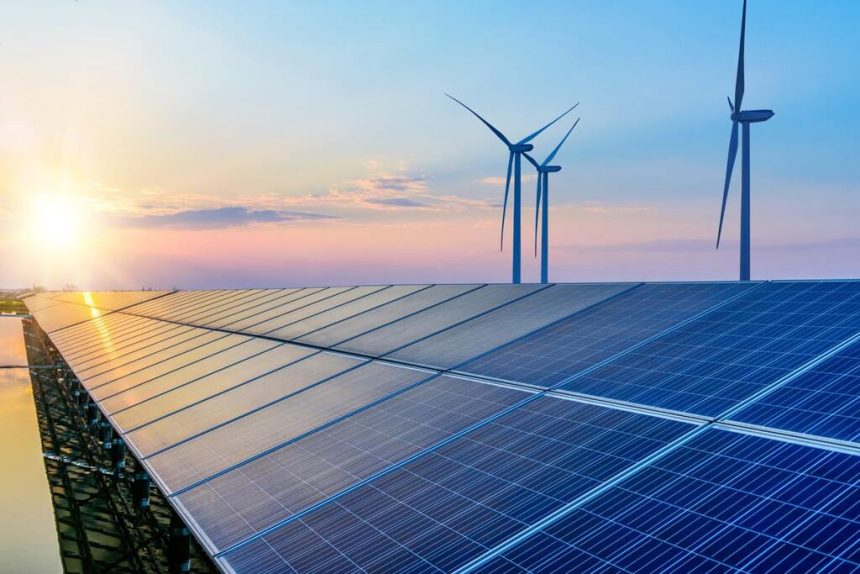The year 2023 saw a new record in the deployment of renewable energies in the energy sector, reaching a total capacity of 3,870 Gigawatts (GW) worldwide.
Renewable energy accounted for 86% of capacity additions; however, this growth is unevenly distributed around the world, indicating a trend away from the goal of tripling renewable energy by 2030, reveals the report "Renewable Capacity Statistics 2024", published on Wednesday by the International Renewable Energy Agency (IRENA).
The 473 GW of renewable energy expansion was once again led by Asia, with a share of 69% (326 GW). This growth was driven by China, whose capacity increased by 63% to 297.6 GW. "This reflects a glaring gap with other regions, leaving the vast majority of developing countries behind, despite their huge economic and development needs," IRENA said in a statement, quoted by Negócios newspaper.
Although Africa saw some growth, it was not significant in comparative terms, with an increase of 4.6%, reaching a total capacity of 62 GW.
In China, the growing competitiveness of solar and wind energy compared to coal and gas power generation has become the main driver for the development of renewable energies.
Meanwhile, in the EU, greater attention to policy and heightened concerns about energy security have become the main catalysts for rapid growth, in addition to the increasing cost-competitiveness of renewable energies compared to fossil fuel alternatives.
Other regions that saw significant expansion were the Middle East, with an increase of 16.6%, and Oceania, with an increase of 9.4%.
The G7 countries, as a group, saw an increase of 7.6%, adding 69.4 GW last year. On the other hand, the G20 countries increased their capacity by 15.0%, reaching 3084 GW by 2023.
However, for the world to reach more than 11 TW for the tripling target, the G20 members alone need to reach 9.4 TW of renewable energy capacity by 2030.
"Policy interventions and a global course correction are urgently needed to effectively overcome structural barriers and create local value in emerging markets and developing economies, many of which continue to be left behind in this progress. Concentration patterns, both geographically and technologically, threaten to intensify the decarbonization gap and pose a significant risk to the achievement of the trebling target," points out Francesco La Camera, Director General of IRENA.
With solar energy continuing to dominate the expansion of renewable energy production capacity, the report highlights that the disparity in growth has not only affected geographical distribution, but also the deployment of technologies.
Solar energy accounted for 73% of the growth in renewable energy last year, reaching 1,419 GW, followed by wind energy, with a 24% share of the expansion in renewable energy.
IRENA recommends a massive increase in funding and strong international collaboration to accelerate the energy transition, placing developing countries as a key priority.
It points out that investments are needed in electricity grids, production, flexibility and storage. The path to tripling renewable energy production capacity by 2030 requires strengthening institutions, policies and skills, the institution argues.
"This extraordinary increase in renewable energy production capacity shows that renewables are the only technology available to rapidly increase the energy transition, in line with the objectives of the Paris Agreement. However, the data also serves as a telling sign that progress is not being fast enough to add the 7.2 TW of renewable energy needed over the next seven years," adds La Camera.
Technological developments
Solar energy: photovoltaic solar energy increased by 345.5 GW last year, while concentrated solar energy increased by 0.3 GW. China alone added 216.9 GW to the total expansion.
Renewable hydroelectric power (excluding pumped hydro): capacity reached 1,270 GW, with a lower expansion than in recent years. Australia, China, Colombia and Nigeria added more than 0.5 GW each.
Wind energy: wind energy grew at a rate of 13%, following solar energy. By the end of 2023, total wind capacity reached 1017 GW. The expansion was dominated by China and the United States.
Bioenergy: expansion continued to slow with an increase of 3%, adding 4.4 GW compared to 6.4 GW in 2022. After China, the main increases were in Japan, Brazil and Uruguay.
Geothermal energy: geothermal energy saw a "very modest" increase of 193 MW, led by Indonesia.
Off-grid electricity: capacity - in regions outside Europe, North America and Eurasia - grew by 4.6 % to reach 12.7 GW, dominated by off-grid solar power, which reached 5 GW by 2023.


Leave a Reply